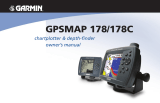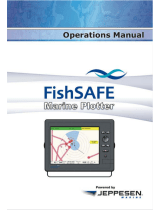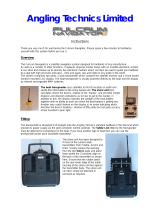
ii GPSMAP 400/500 Series Owner’s Manual
Introduction
Table of Contents
Introduction �����������������������������������������������������������������������������i
Tips and Shortcuts ��������������������������������������������������������������������������� i
Manual Conventions ������������������������������������������������������������������������ i
Quick Links ��������������������������������������������������������������������������������������i
Declaration of Conformity (DoC) ���������������������������������������������������� iv
Product Registration ���������������������������������������������������������������������� iv
Contact Garmin ������������������������������������������������������������������������������ iv
Getting Started �����������������������������������������������������������������������1
Unit Overview ����������������������������������������������������������������������������������1
Turning the Unit On or Off ���������������������������������������������������������������2
Initializing Unit Settings �������������������������������������������������������������������2
Adjusting the Backlight ��������������������������������������������������������������������3
Using the Keypad ����������������������������������������������������������������������������4
Acquiring GPS Satellite Signals ������������������������������������������������������5
Using Simulator Mode ���������������������������������������������������������������������5
Inserting and Removing SD Cards �������������������������������������������������5
Understanding the Home Screen ����������������������������������������������������6
Using Charts ��������������������������������������������������������������������������7
Using the Navigation Chart �������������������������������������������������������������7
Changing the Navigation Chart Settings ��������������������������������������� 11
Using the Split Navigation Chart ���������������������������������������������������14
Using Perspective 3D �������������������������������������������������������������������14
Using Mariner’s Eye 3D ����������������������������������������������������������������15
Using Fish Eye 3D ������������������������������������������������������������������������17
Using Fishing Charts ���������������������������������������������������������������������17
Enabling High Resolution Satellite Imagery ����������������������������������18
Viewing Aerial Photos �������������������������������������������������������������������19
Animated Tide and Current Indicators ������������������������������������������20
Detailed Road and POI Data ��������������������������������������������������������21
Using Automatic Guidance ������������������������������������������������������������21
Using the Chart/Sonar Screen ������������������������������������������������������22
Where To? ����������������������������������������������������������������������������23
Navigating to a Destination �����������������������������������������������������������23
Creating and Using Waypoints������������������������������������������������������25
Creating and Using Routes �����������������������������������������������������������26
Using Tracks ���������������������������������������������������������������������������������28
Using BlueChart g2 Vision ������������������������������������������������������������30
Navigating with a Garmin Autopilot �����������������������������������������������30
Viewing Information ������������������������������������������������������������31
Viewing a Compass ����������������������������������������������������������������������31
Viewing Numbers ��������������������������������������������������������������������������31
Viewing Trip Information ���������������������������������������������������������������32
Viewing and Customizing Fuel Gauges and Engine Gauges �������32
Viewing and Customizing Wind Gauges ���������������������������������������36
Viewing Tide-station Information ���������������������������������������������������37
Viewing Current Information ���������������������������������������������������������38
Viewing Celestial Information ��������������������������������������������������������38
Viewing User Data ������������������������������������������������������������������������39
Viewing Other Vessels ������������������������������������������������������������������41
Automatic Identication System ����������������������������������������������������41






















